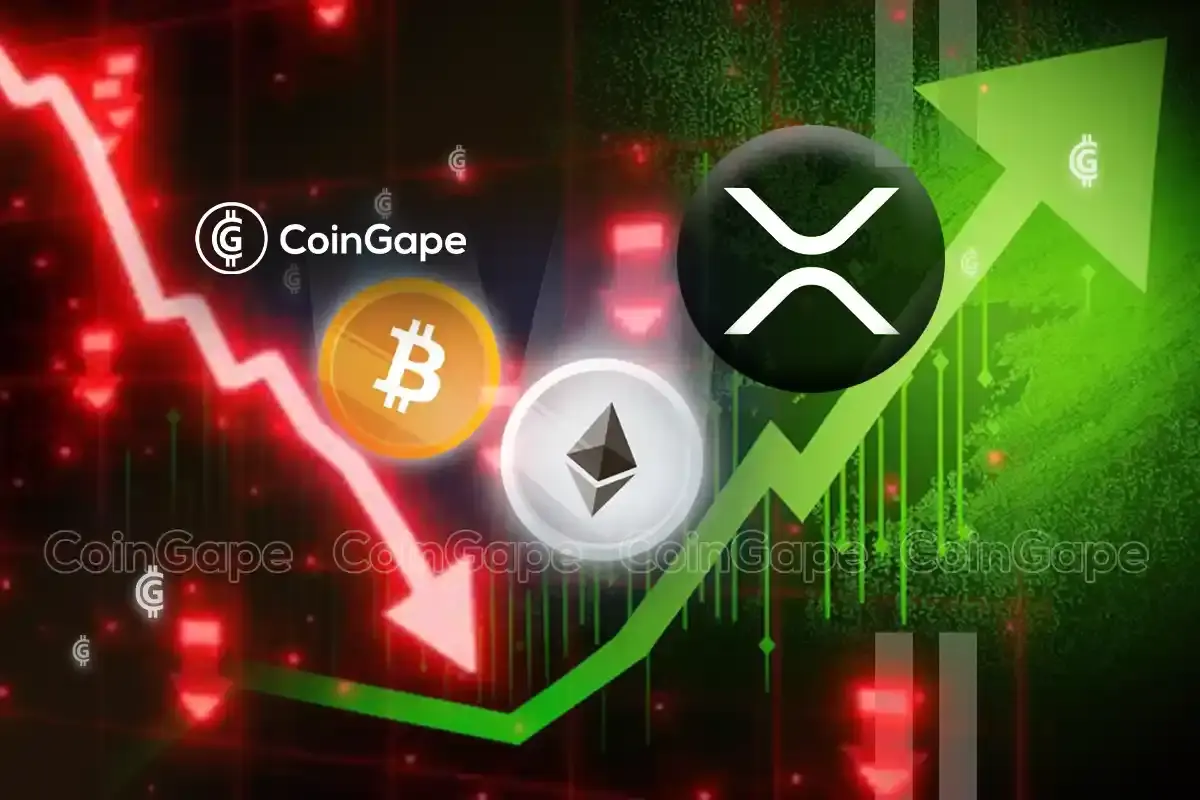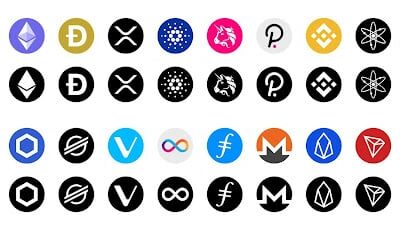Ethereum
Is Ethereum a security or a commodity? Why is this important and will an ETF change this?

The ongoing debate over the classification of Ethereum in the United States is currently receiving considerable attention due to Actions by the SEC and a possible ETF Approval. The distinction between commodities and securities has substantial implications for the regulation and future of crypto. If Ethereum were officially recognized as a commodity, the crypto landscape could see transformative changes in regulatory oversight, market participation, and investment vehicles.
Definitions of raw materials and safety
In the United States, a product is generally defined as a basic good used in commerce and interchangeable with other goods of the same type. This category includes items like gold, oil, and agricultural products. The Commodity Futures Trading Commission (CFTC) regulates commodities, focusing on market stability and fraud prevention. Conversely, a security represents an ownership position in a publicly traded company through stock, a creditor relationship with a government agency or corporation through bonds, or ownership rights represented by an option. The Securities and Exchange Commission (SEC) oversees securities, with a focus on investor protection and disclosure requirements.
The classification of Ethereum is a controversial issue. In 2018, the CFTC asserted jurisdiction over Bitcoin and other virtual currencies, classifying them as commodities. However, the SEC has historically been more cautious. In 2018, SEC Director William Hinman suggested that Ethereum, which was initially funded through an initial coin offering (ICO), might not be a security due to its decentralized nature. Despite this, the lack of a definitive classification has left Ethereum in a regulatory gray area.
How would classifying Ethereum as a commodity change things?
The potential recognition of Ethereum as a commodity would have several implications. First, it would place Ethereum under the jurisdiction of the CFTC, which could lead to more consistent regulatory guidelines. This change could reduce the regulatory uncertainty that currently hinders some institutional investors, thereby encouraging broader participation in the Ethereum market. Additionally, it could pave the way for new financial products, such as Ethereum futures and options, thereby improving market liquidity and stability.
One important development that could influence Ethereum’s classification is the approval of an Ethereum exchange-traded fund (ETF). ETFs are investment funds traded on an exchange, much like stocks. They hold assets such as stocks, commodities or bonds and typically operate with an arbitrage mechanism designed to keep trades close to their net asset value, although discrepancies can sometimes occur. In the context of Ethereum, an ETF would constitute a regulated investment vehicle familiar to institutional and retail investors. The approval of Bitcoin ETFs in the United States has already set a precedent since they are designated as a Commodity ETFs.
The approval of an Ethereum ETF could strengthen the case for its classification as a commodity. The successful launch of a Bitcoin ETF demonstrated to regulators that digital assets can be integrated into traditional financial systems in a regulated and secure manner. An Ethereum ETF would likely undergo rigorous review, ensuring all compliance and security measures are in place. This process could further validate Ethereum’s status as a commodity by demonstrating its stability and maturity as an asset class.
Recognizing Ethereum as a commodity would not only clarify its regulatory status, but also enhance its appeal to a wider range of investors. Institutional interest in crypto is growing, driven by the desire for portfolio diversification and inflation hedging. Clear regulatory guidelines would mitigate risks associated with regulatory uncertainty, making Ethereum a more attractive investment.
Additionally, this recognition could spur innovation within the Ethereum ecosystem. With clearer regulations, developers and companies could embark on more ambitious projects without fear of unexpected legal repercussions. This could accelerate the development of decentralized applications (dApps) and smart contracts, further strengthening Ethereum’s role in the broader digital economy.
Ultimately, official recognition of Ethereum as a commodity would mark a pivotal moment for the crypto industry. This would rationalize regulatory oversight, improve market participation and foster innovation. The potential approval of an Ethereum ETF could play a crucial role in this process, demonstrating the viability of Ethereum as a stable and mature asset. However, it would not be a civil servant who would settle the debate concerning Ethereum being a commodity unless additional specific classifications have been issued by the SEC.
Latest Alpha Market Report
Ethereum
Cryptocurrency liquidations surpass $200 million as Ethereum and Bitcoin plummet

Cryptocurrency market liquidations hit their highest level in a week on Wednesday as the price of Bitcoin fell below $60,000.
Over the past 24 hours, over 74,000 traders have been liquidated for $208 million, CoinGlass the data shows it.
The majority of those losses, about $184 million, went to investors holding long positions who had bet on a price rise.
The largest liquidations hit Ethereum investors, at $55.5 million, almost entirely on long positions, the data showed.
Current issues surrounding US monetary policy, geopolitical tensions, and the upcoming US presidential election in November are expected to impact the price of the leading cryptocurrency throughout 2024.
Bitcoin abandoned The stock price fell from $62,200 to $59,425 intraday. The asset has since recovered its losses above $60,200, but is still down 3% over the past 24 hours.
Solana, the world’s fifth-largest cryptocurrency by market capitalization, was the worst hit among the top 10 cryptocurrencies, down about 8% to $140. Solana had been riding high on New York investment management firm VanEck’s filing of its Solana Trust exchange-traded fund late last month.
Major cryptocurrencies have been falling over the past month. Ethereum has fallen more than 12% over 30 days despite growing interest in the launch of Ethereum spot ETFs.
Some analysts predict that new financial products could begin marketing in mid-Julywith at least one company predicting that the price of ETH will then take offBitcoin is down 12% over the same period.
Certainly, analysts always see further price increases this yearThe current market cooling represents a precursor to another major price surge in the coming months, Decrypt reported Monday.
On Wednesday, analytics firm CryptoQuant released a report examining Bitcoin Mining Metrics and highlighted the conditions for a return of prices to current levels.
Edited by Sebastian Sinclair.
Ethereum
Volume up 90%: good for ETH price?

Ethereum (ETH) has emerged as a beacon in the sea of blockchains, with a staggering 92% increase in decentralized application (dApp) volume over the past week. But the news comes with a layer of complexity, revealing a landscape of both opportunity and potential setbacks for the leading blockchain.
Cheap gas fuels the fire
Analysts attribute the explosion in decentralized application volume to the Dencun upgrade in March, which significantly reduced gas costs – the cost associated with processing transactions on the Ethereum network.
Lower transaction fees have always attracted users, and this recent development seems to be no exception. The surge in activity suggests a revitalized Ethereum that is likely to attract new projects and foster a more vibrant dApp ecosystem.
NFT craze drives numbers up
While overall dApp volume (see chart below) paints a positive picture, a closer look reveals a more nuanced story. This surge appears to be driven primarily by an increase in NFT (non-fungible token) trading and staking activity.
 Source: DappRadar
Source: DappRadar
Apps like Blur and Uniswap’s NFT aggregator have seen significant surges, highlighting the rise of the NFT market on Ethereum. This trend indicates a thriving niche in the Ethereum dApp landscape, but raises questions about the platform’s diversification beyond NFTs.
A look at user engagement
A curious problem emerges when looking at user engagement metrics. Despite the impressive increase in volume, the number of unique active wallets (UAWs) on the Ethereum network has actually decreased.
Ethereum is now trading at $3,316. Chart: TradingView
This disconnect suggests that current activity could be driven by a smaller, more active user base. While high volume is certainly a positive indicator, seeing broader user participation is essential to ensuring the sustainability of the dApp ecosystem.
A glimmer of hope ?
A positive long-term indicator for Ethereum is the trend of decreasing holdings on the exchange, as reported by Glass nodeThis suggests that ETH holders are moving their assets off exchanges, potentially reducing selling pressure and contributing to price stability.
If this trend continues, ETH could potentially target $4,000 this quarter or even surpass its all-time high. However, this price prediction remains speculative and depends on various market forces.
 Ether price expected to rise in coming weeks. Source: CoinCodex
Ether price expected to rise in coming weeks. Source: CoinCodex
Ethereum at a Crossroads
Ethereum is at a crossroads. Dencun Upgrade has clearly revitalized dApp activity, particularly in the NFT space. However, uneven dApp performance and the decline of the UAW are raising concerns about the long-term sustainability of this growth. Network growth, measured by the number of new addresses joining the network, is also slowing, according to Santiment, which could potentially hamper wider adoption.
The short-term price outlook for ETH remains uncertain. While long-term indicators, such as declining exchange holdings, suggest potential for price appreciation, slowing network growth could lead to a price decline in the short term.
Look forward to
The coming months will be crucial for Ethereum. The platform must capitalize on the renewed interest in dApps by attracting a broader user base and fostering a more diverse dApp ecosystem beyond NFTs. Addressing scalability issues and ensuring user-friendly interfaces will also be essential to sustain growth.
If Ethereum can overcome these challenges, it has the potential to cement its position as the premier platform for decentralized applications. However, if it fails to adapt, other waiting blockchains could capitalize on its shortcomings.
Featured image from Pexels, chart from TradingView
Ethereum
Ethereum, Bitcoin, and XRP Behind $1.5 Billion Losses in Cryptocurrency Scams

The first half of 2024 has seen a surge in major hacks in the cryptocurrency sector. Ethereum (ETH)Bitcoin (BTC) and XRP have resulted in losses of over $1.5 billion due to cryptocurrency scams. This year, over 200 major incidents have resulted in losses of approximately $1.56 billion.
Cryptocurrency Scam Losses Reach $1.5 Billion
According to data from Peck Shield Alert, only $319 million in lost crypto funds have been recovered. Furthermore, this year’s losses represent a staggering 293% increase over the same period in 2023, when losses totaled $480 million.
Overview of Cryptocurrency Scams in 2024, Source: PeckShieldAlert | X
Additionally, DeFi protocols have been the top targets for hackers, accounting for 59% of the total value stolen. More than 20 public chains have suffered major hacks during this period. Additionally, Ethereum, Bitcoin, and XRP top the list for the amount lost via cryptocurrency hacks.
Additionally, Ethereum and BNB Chain were the most frequently targeted, each accounting for 31.3% of the total hacks. Meanwhile, Arbitrum followed with 12.5% of the attacks. One of the most significant incidents occurred on June 3, 2024.
Bitcoin DMMa major Japanese cryptocurrency exchange, reported a major breach. Attackers stole 4,502.9 BTC, worth over $300 million at the time. The incident highlighted the vulnerabilities of exchanges, especially those that handle large volumes of digital assets.
Read also : XRP News: Whale Moves 63 Million Coins as Ripple Strengthens Its Case
Major XRP, ETH and BTC hacks
A week after the DMM Bitcoin attack on June 10, UwU Loana decentralized finance (DeFi) lending protocol, was compromised. The breach resulted in a loss of approximately $19.3 million in digital assets. The hack underscores the ongoing risks associated with DeFi platforms, which often operate with less regulatory oversight. The platform later offered a $5 million reward to catch the hacker.
Earlier this year, on February 3, 2024, Ripple co-founder Chris Larsen confirmed a major security breach involving his personal wallets. Initially, rumors circulated that Ripple itself was targeted. However, Larsen clarified that the hack involved his digital wallets and not Ripple’s corporate assets.
The hackers managed to transfer 213 million XRP tokens, worth approximately $112.5 million. Additionally, on-chain detective ZachXBT first alerted the community about the suspicious transactions. In response to the theft, Larsen and various cryptocurrency exchanges took swift action to mitigate the impact.
Several exchanges, including MEXC, Gate, Binance, Kraken, OKX, HTX, and HitBTC, collaborated to freeze a significant portion of the stolen funds. Binance alone froze $4.2 million worth of XRP to aid in the investigation.
Additionally, on April 2, 2024, FixedFloat, a Bitcoin Lightning-based exchange, experienced a security breach. Unauthorized transactions resulted in financial losses exceeding $3 million. This incident highlighted ongoing security issues for FixedFloat, following a similar breach earlier in the year.
The company has also faced significant challenges securing its platform against repeated attacks. Additionally, in February, hackers stole $26 million worth of Ethereum and Bitcoin from FixedFloat. These digital assets were then transferred to exchanges for profit.
Read also : Ethereum Doubles Bitcoin’s Network Fee Revenue, Thanks to Layer-2
Ethereum
Ethereum’s Year-Over-Year Revenue Tops Charts, Hitting $2.7 Billion

Ethereum blockchain has been in first place for a year incomesurpassing all major blockchains.
According to data provided by Lookonchain, Ethereum generated $2.72 billion in annual revenue, surpassing the Bitcoin network by a margin of $1.42 billion. The data shows that Bitcoin accumulated $1.3 billion in revenue over the same period.
Defi Llama Data watch that Ethereum is still the leader in decentralized finance (challenge) with a total value locked (TVL) of $58.4 billion, or 60.9% of the entire market. The blockchain recorded a 30-day fee revenue of $131 million, according to the data aggregator.
Bitcoin’s TVL is currently set at $1 billion.
The network of the second largest cryptocurrency, ETH, witness a 155% year-over-year increase in its fee revenue in the first quarter of this year, as the cryptocurrency market saw a bullish trend.
Tron comes in third with annual revenue of $459 million. Solana and BSC also recorded nine-figure revenues of $241 million and $176 million, respectively.
Notably, Tron is the second largest chain in the challenge scene with a TVL of $7.7 billion. BSC and Solana take third and fourth place with TVLs of $4.8 billion and $4.5 billion, according to Defi Llama.
Avalanche, zkSync Era, Optimism and Polygon reached the top 10 with $68 million, $59 million, $40 million and $23 million in year-over-year revenue, respectively.
-

 Videos9 months ago
Videos9 months agoBitcoin Price AFTER Halving REVEALED! What’s next?
-

 Bitcoin8 months ago
Bitcoin8 months agoBitcoin Could Test Record Highs Next Week in ETF Flows, Says Analyst; Coinbase appears in the update
-

 Videos9 months ago
Videos9 months agoAre cryptocurrencies in trouble? Bitcoin Insider Reveals “What’s Next?”
-

 Videos9 months ago
Videos9 months agoCryptocurrency Crash Caused by THIS…
-

 Videos8 months ago
Videos8 months agoThe REAL reason why cryptocurrency is going up!
-

 Altcoin8 months ago
Altcoin8 months agoThe best Altcoins to buy before they rise
-

 Videos9 months ago
Videos9 months agoBlackRock Will Send Bitcoin to $116,000 in the Next 51 Days (XRP News)
-

 Videos9 months ago
Videos9 months agoDonald Trump: I like Bitcoin now! Joe Biden HATES cryptocurrencies.
-

 Videos8 months ago
Videos8 months agoSolana Cryptocurrencies: the future WILL SHOCK you | What comes next?
-

 News9 months ago
News9 months agoTON, AKT, AR expect increases of 15%+ as the market stabilizes
-

 Videos8 months ago
Videos8 months agoBitcoin Whale REVEALS: The 5 Best Coins to Make You a Millionaire!
-

 Videos8 months ago
Videos8 months agoBREAKING NEWS: The 19 best cryptocurrencies ready to skyrocket!





